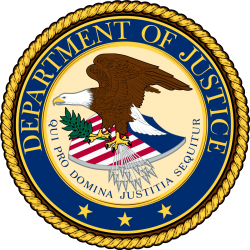Schedule 1 narcotics are opioids regulated as controlled substances, with a high potential for abuse and no accepted medical purpose.
Schedule 1 Narcotics List
Schedule 1 narcotics include a group of controlled substances that the Drug Enforcement Agency (DEA) has deemed illegal to use based on their lack of medical benefit and “potential for abuse” that can lead to addiction and harm.1 The scheduling system allows the DEA and other government agencies to determine which substances people can legally consume for medical purposes and how they can legally access them.1
In this Article:
- What is a Schedule 1 Narcotic?
- Schedule 1 Narcotics List
- Other Schedule 1 Controlled Substances
- Treatment for Schedule 1 Narcotic Use
What is a Schedule 1 Narcotic?

The Department of Justice classifies certain drugs as schedule 1 narcotics.
Narcotics are opioids that the DEA limits access to.1 According to the DEA, narcotics include “opium, opium derivatives, and their semi-synthetic substitutes.” 1
The Schedule 1 controlled substance list serves as the highest tier of the DEA’s scheduling system. A Schedule 1 drug has a “high potential for misuse” and “no currently accepted medical use in treatment in the United States.”1
Opioid use can cause physiological dependence, withdrawal, and overdose. 2 It can also can pose legal, personal, and health risks, especially when the opioid is made illegally.1, 2 The risk for developing an opioid use disorder is related to genetics, individual temperament, family and influences, and social environmental factors, according to the American Psychiatric Association’s Diagnostic and Statistical Manual of Mental Disorders, Fifth Edition (DSM-5).
Schedule 1 Narcotics List
Different types of opioids share similarities in their influence on a person’s mind and body when used.1 Beyond heroin, the Schedule 1 narcotics list includes several analogs of opioids.1 Analogs are drugs that share chemical similarities with other drugs.
Differences in potency, purity, and chemical structure can change how these Schedule 1 controlled substances impact the health of those who take them.1
Heroin
Heroin holds many risks for the people who use it and can affect their loved ones, as well as the communities where people sell it.3 Heroin influences the way a person’s central nervous system and brain function. The pleasure and pain relief associated with heroin use can increase a person’s desire to misuse this substance. When physically dependent on or addicted to heroin, people may continue to misuse heroin despite knowledge of the risks and of developing or existing health problems.
Some symptoms of heroin use include:3
- Extreme drowsiness
- Vomiting
- Nausea
- Itchiness
- Slow heart rate
- Impaired breathing
The impact heroin use has on breathing can lead to life-threatening changes in the body.3 The lack of oxygen that can occur when a person uses heroin and struggles to breathe can cause permanent brain damage, lead to coma, or result in death.
On the streets, people may identify heroin using names such as:1, 4
- H
- Horse
- Hell Dust
- Big H
- Smack
- Skunk
- Skag
- Negra
- Thunder
- Chiva
- Brown Sugar
- Dope
- White Horse
People who misuse this substance may do so by injecting, smoking it, or snorting it through their nose.4 Snorting this substance can cause damage to mucosal tissues in the nose. Perforations to the nasal septum can also occur when a person snorts heroin.3
Scarring can occur in the veins of people who inject heroin. Infections in soft tissue, heart valves, and blood vessels can also occur because of heroin injection.3 Abscesses, or swelling of body tissue, filled with pus can develop.
People can contract certain infections when they inject this substance with needles that are shared with others.3 Needle-sharing can lead to the spread of HIV, hepatitis, and other blood-borne illnesses. The likelihood of bacterial infection adds another layer of risk to ingesting heroin via injection.
Heroin may appear as a brown or white powder. Others may consume a type of heroin known as “black tar heroin,” which is a sticky black version of this Schedule 1 narcotic.
Opioid overdose is one of the most serious health risks when using heroin.3 Using more heroin than a person can safely process can depress breathing and heart function. Without emergency medical intervention, overdose can lead to death.
Access to naloxone, an overdose antidote prescribed under brand names Narcan and Kloxxado, can increase a person’s chances of surviving an overdose.3 Family members or first responders who know how to administer these life-saving medications can help a person experiencing an opioid overdose. Naloxone can counter the effects of opioid overdose and prevent this medical emergency from becoming life-threatening.3
Fentanyl Analogs
Fentanyl is an opioid that is available legally for medical purposes as a Schedule 1I narcotic medically indicated only for breakthrough pain in cancer patients who have a tolerance to other opioid pain relievers. However, The DEA also recognizes the risks of illegally made fentanyl analogs, opioids with similar chemical structures to legal fentanyl medications. Illicitly manufactured and sold for misuse, the DEA classifies fentanyl analogs as Schedule 1 controlled substances.
Fentanyl goes by several street names including:1, 4
- He-Man
- China White
- Snowflake
- Blue
- Blonde
- Diamond
- Tango and Cash
- Murder 8
- Great Bear
- China Town
- China Girl
- Friend
- Dance Fever
- Apache
- Goodfellas
- King Ivory
- Jackpot
- Humid
- Cash
People can take fentanyl in several ways.1 It can be taken by mouth in lozenge or tablet forms. Or a person may inject a fentanyl analog in its powder form. Snorting and smoking fentanyl also serve as methods of ingestion and misuse.
Other illicit substances, such as heroin or cocaine may be laced with fentanyl.1 The impurities in illegal substances can lead to unintended drug exposure.
Fentanyl can impact the body and mind in a similar way to other opioids, including heroin.1 Effects of fentanyl misuse include:1
- Confusion
- Nausea
- Euphoria
- Drowsiness
- Dizziness
- Pain reduction
- Relaxation
- Sedation
- Urinary problems
- Vomiting
- Small pupils
- Breathing problems
As with heroin and other opioid substances, this Schedule 1 narcotic can cause an overdose.1 Clammy skin that feels cold to the touch and turns blue or purple can indicate fentanyl overdose. Slowed breathing and coma can indicate an increased risk of overdose becoming life-threatening. A person’s risk of overdose can increase when people take more fentanyl than their body can process.
The medication naloxone can address the risks of overdose associated with fentanyl analog misuse.5 Treat all suspected overdoses as an emergency and seek medical attention immediately.
Other Schedule 1 Controlled Substances
Schedule 1 drugs include more substances than only narcotics.1 According to the DEA, several substances in the hallucinogen and stimulant classes of substances qualify for a Schedule 1 designation.2, 4 People who misuse these other types of Schedule 1 drugs also can develop substance use disorders with harmful consequences.2
Despite the legalization of marijuana (cannabis) for medical and recreational use in some states, the DEA still currently classifies tetrahydrocannabinol (THC), which is the psychoactive ingredient in marijuana, as a Schedule 1 drug that has no federally recognized medical use. 2 Use of THC outside of the legal parameters of your state for medical or recreational purposes is subject to criminal penalties similar to those for use of any other controlled substance.
Substances that the DEA classifies as Schedule 1 drugs include:1, 4
- Marijuana or cannabis
- Synthetic cannabinoids
- MDMA or 3,4-methylenedioxymethamphetamine
- LSD or lysergic acid diethylamide
- Psilocybin
- Mescaline, derived from peyote
- PCP
- Cathinone
- Ayahuasca
- DMT
- GHB or gamma-hydroxybutyrate
- PCP or phencyclidine
- Synthetic cathinone or bath salts
Each type of controlled substance has a unique chemical structure, effects on the person who takes it, and a set of symptoms that can occur when use develops into physical dependence or addiction.1, 2, 4
If you have concerns about the way substance use may impact you or someone you know, reach out for support. An assessment can help determine the level of care a person needs to begin the road to addiction recovery.6
Treatment for Schedule 1 Narcotic Use
Before a person can begin treatment for opioid or narcotic use, they may benefit from completing a detoxification or withdrawal management process.6 Withdrawal management constitutes a set of treatment protocols that helps a person safely remove substances from their system.
Sometimes withdrawal can become so severe that a person needs to visit the hospital or stay at a residential treatment facility for support.6 Withdrawal management for Schedule 1 narcotics can also occur in an intensive outpatient or partial hospitalization treatment setting. If a person’s substance use and withdrawal experience become life-threatening, then a higher level of care may meet their recovery needs.
After successful detoxification has taken place, a person can begin behavioral therapy in addition to medical measures.6 People can receive substance use treatment at inpatient hospitals, residential treatment facilities, intensive outpatient programs, and other outpatient programs.
Treatment services that can support recovery from narcotics misuse include:6
- Individual psychotherapy
- Group therapy
- Peer and mutual support groups
- Holistic interventions
- Medication management
- Family therapy
- Case management
- Treatment and relapse prevention planning
- Sober living accommodations
An assessment from a qualified substance use treatment provider can help you figure out what treatment program might best suit your needs.6 For more information on where to get an assessment or how to begin treatment, call 800-934-1582(Who Answers?) to learn more about the recovery choices available to you.
References:
- Drug Enforcement Administration Community Outreach and Prevention Support Section. (2020). Drugs of Abuse: A DEA Resource Guide, 2020 Edition.
- American Psychiatric Association. (2013). Diagnostic and Statistical Manual of Mental Disorders, Fifth Edition (DSM-5).
- S. Department of Health and Human Services. (2021, April 13). Heroin Research Report.
- S. Department of Health and Human Services. (2020, August 20). Commonly used drugs charts.
- S. Library of Medicine. (2020, December 12). Opioid overdose. MedlinePlus.
- Miller, W. R., Forcehimes, A. A., & Zweben, A. (2019). Treating Addiction: A Guide for Professionals. The Guilford Press.
the Take-Away

